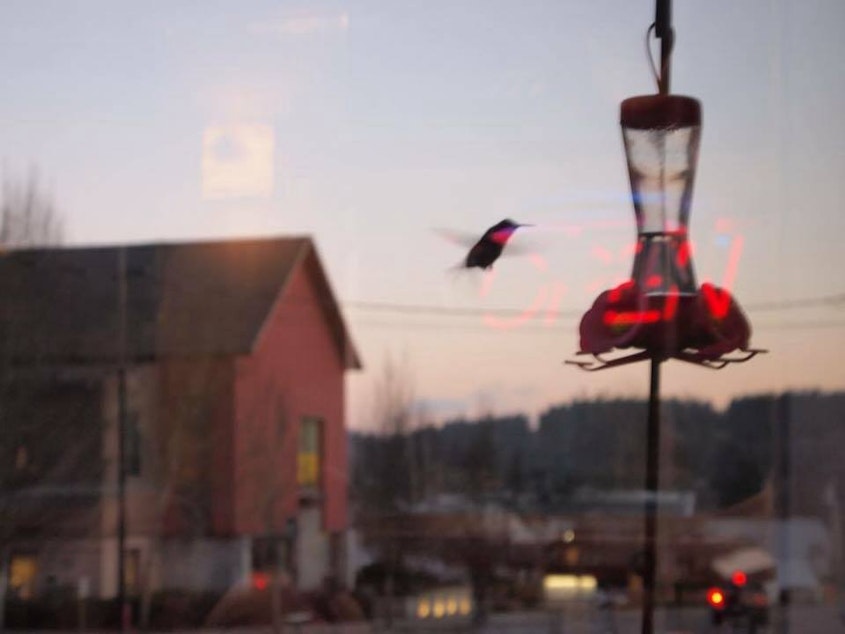How dramatic pandemic shifts affected Northwest birds

While we were cooped up in Covid lockdowns, birds in the cities and suburbs of the Pacific Northwest were spreading their wings!
And in a new University of Washington paper, ornithologists suggest that birds like crows, hummingbirds, finches, and chickadees were using a wider variety of public spaces during the early days of the pandemic.
Olivia Sanderfoot was the lead researcher on the study.
Sanderfoot is now a postdoctoral scholar in the Department of Ecology and Evolutionary Biology at UCLA, and joined Soundside to talk about the study that was released last week. More than 900 volunteers helped observe local birds at their homes or in nearby spaces in the spring of 2020.
A big takeaway from the study: as lockdowns started lifting, and people started going out of their homes more, volunteers reported seeing more bird activity.
"That surprised us," Sanderfood said. "Because we expected that as human activity increased, we would observe greater background noise and commotion, which would make it harder to detect birds."
That wasn't the case.
"That could suggest that our backyards and parks serve as important refugia for birds in cities. And then as the hustle and bustle and commotion of pre pandemic life resumed, those places became places that birds found more enticing."
Sponsored
With a wealth of data in cities across the Northwest, the team was able to answer some exciting questions it had.
"This really shows that even during a time of greatly reduced human activity, the amount that we move around influences bird behavior, and not all species respond in the same way," Sanderfoot explained.
You can read the study, "Drivers of avian habitat use and detection of backyard birds in the Pacific Northwest during COVID-19 pandemic lockdowns," for free at Nature.com.
Sanderfoot expressed a desire for all of the volunteers who participated in the study to be able to read the final study without hitting a paywall. She also posted a Twitter thread with a detailed breakdown for the public to enjoy.
"I'm thrilled that we were able to publish this paper in an open access journal so that all of our community scientists can read it," she explained. "That was really, really important."





